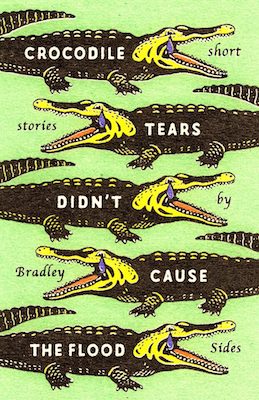7 Magical Realism Stories from the American South

I’ve lived in Alabama my entire life, and if I’m being honest, I doubt I’ll ever leave. It’s my home—my beautiful, strange, complicated home.Â

My new speculative/magical realism short story collection, Crocodile Tears Didn’t Cause the Flood, has a particular fascination with the American South. In my latest batch of stories, there is an enormous pond monster captivating crowds in rural Tennessee, a vampire family, also in rural Tennessee, trying to keep its organic garlic farm going, and a young test-taker challenging an Alabama monster she knows quite closely. Even when the stories aren’t explicitly set in my part of the world, readers will still find quilt makers, Mason jars, and front porches. To me, these are images of the South I know.Â
I don’t think the phrase “Speculative South†is a thing, but maybe it should be. I began thinking about how folks from my neck of the woods—meaning writers with ties to the American South—are putting out some of the weirdest, coolest, and most thoughtful speculative fiction and magical realism there is.Â
Here are seven stories to get you started with exploring the contemporary Speculative South:
“The Acts of Velmajean Swearington Hoyt and the New City of God†by Randall Kenan from If I Had Two Wings
One of the greatest magical realism writers to ever do it, North Carolina’s Randall Kenan sadly passed in 2020, but his incredible legacy lives on. His last collection contains one of his best short works, and it’s a story about faith—and miracles. The titular protagonist gives the impossible. She cures. She brings back the dead. The perfect ending of “The Acts of Velmajean Swearington Hoyt and the New City of God†further proves the story’s brilliance.Â
“Lonelyhearts†by Whitney Collins from Big Bad
Kentucky author Whitney Collins begins her fantastic—and fantastical—story “Lonelyhearts†like this: “Lenora’s first heart arrived in a box of Rice Krispies. It fell into her cereal bowl with a damp thud, and for a brief moment she mistook it for a hunk of roast beef.†And the story only gets better. Collins’ story, full of literal hearts, is full of tenderness, loneliness, and love.
“The Great Fish†by David Lawrence Morse from The Book of Disbelieving
Originally from Georgia, author David Lawrence Morse gave us one of the best magical realism collections of 2023 with The Book of Disbelieving. The book’s opening story, “The Great Fish,†is probably my favorite. In it, Ceta, a whale, holds an entire village on her back. The villagers know little of what is beyond their immediacy. What unfolds is a wonderfully sharp story about belief and truth.
“Hi Ho Cherry-O†by Becky Hagenston from The Age of Discovery
Becky Hagenston, Professor of English at Mississippi State University, is one of the best magical realists around. Read her latest collection, and you’ll see all the proof you need. “Hi Ho Cherry-O†is the Hagenston story I most recommend. All you’ll want to know going in is that there is a board game researcher, her lost-in-virtual-reality husband, and a “Service Robot†named Wendell. It also doesn’t hurt for me to tell you that the story is about connection (and disconnection) and the relationship between humans and technology.  Â
“Fixers†by Dan Leach from Dead Mediums
South Carolina author Dan Leach delivers some excellent magical realism in “Fixers.†Early on, the narrator tells us, “My abdomen, which had previously been flat and muscular, now consisted of a bubble of flesh the size of a summer melon.†Soon, a television wizard enters the picture, and more bodily chaos ensues. The story, which looks at the power of love and curses, is a stunner.
“Tiny Bones†by Jen Fawkes from Tales the Devil Told Me
In “Tiny Bones,†Arkansas-based writer Jen Fawkes takes a wildly imaginative and equally tragic look at the witch from the classic Hansel and Gretel fairytale. Fawkes story, brimming with pathos, guilt, and self, showcases hunger most of all. From a collection that reimagines some of the most memorable villains to ever be on the page, “Tiny Bones†is a standout.Â
“Decomposition: A Primer for Promiscuous Housewives†by Jamie Quatro from I Want to Show You More
Tennessee writer and teacher Jamie Quatro takes on fabulism beautifully in several of her stories, but it’s “Decomposition: A Primer for Promiscuous Housewives†that I find myself returning to the most. In this story, a corpse rots away in a couple’s bed. The husband doesn’t believe the corpse is real. The wife dreams of possibilities. The story is so layered, too. Yes, it’s about a slowly rotting (almost magical) corpse, but it’s also about adultery, grief, faith, and sin.Â
Read the original article here






